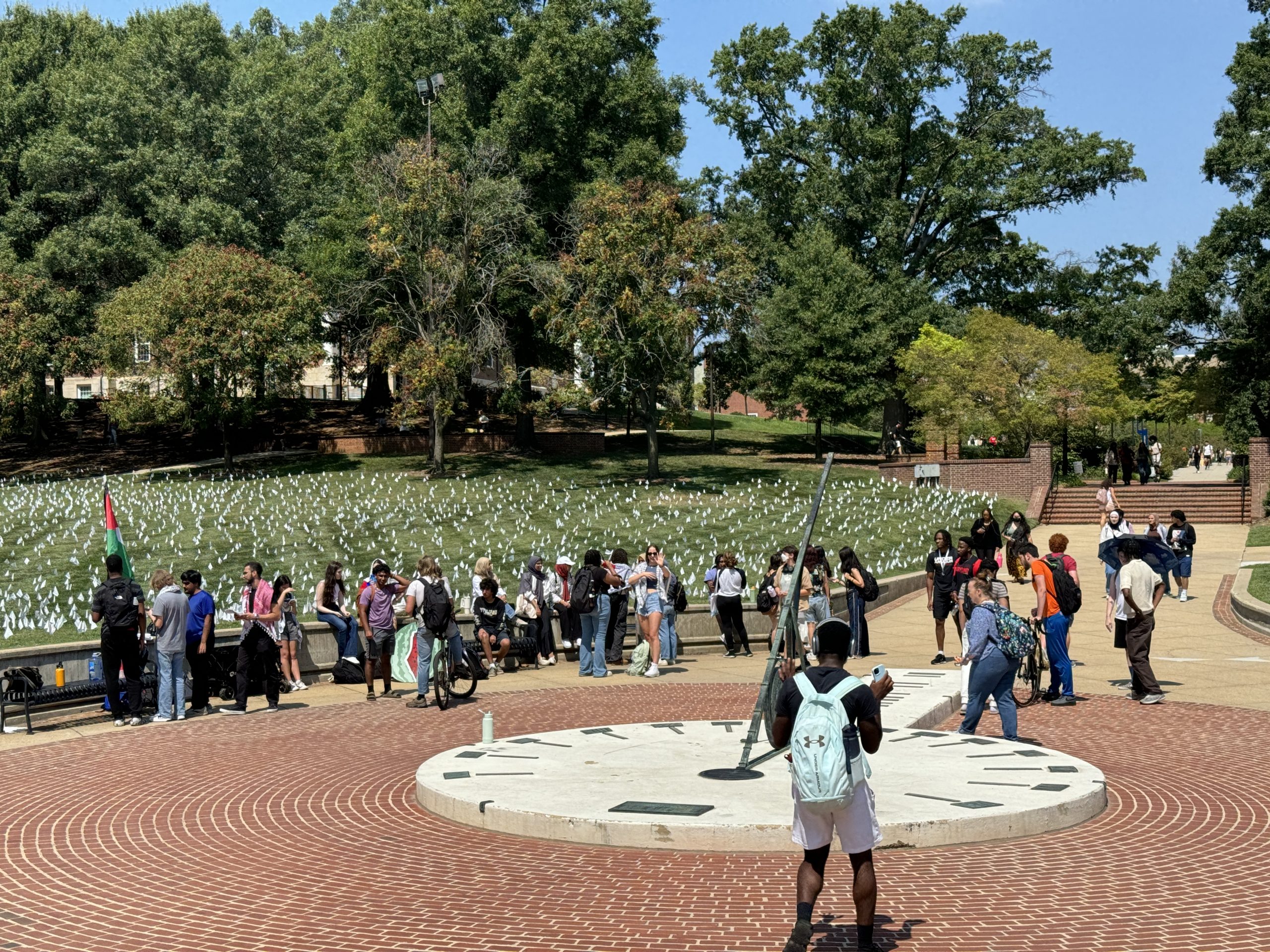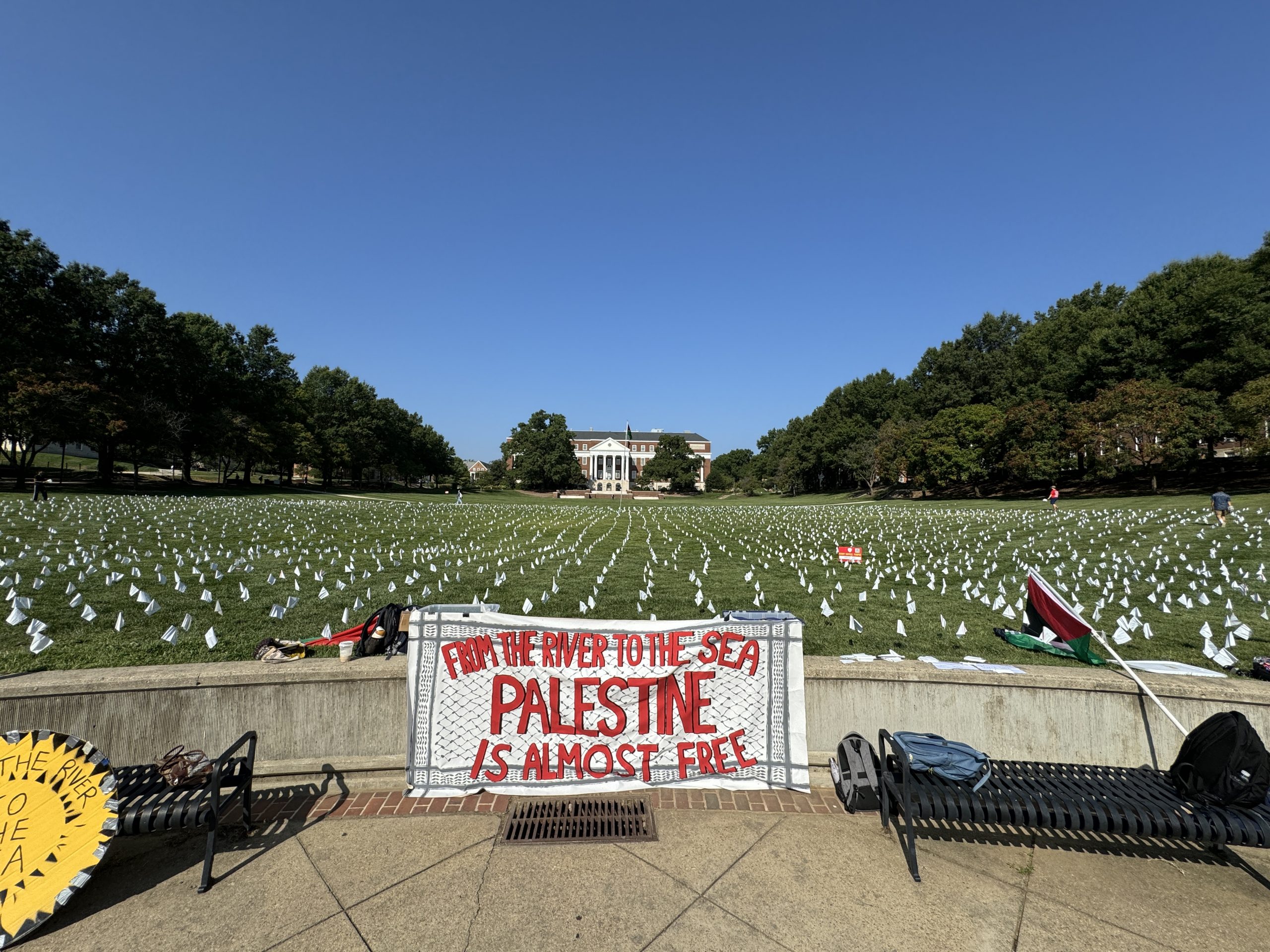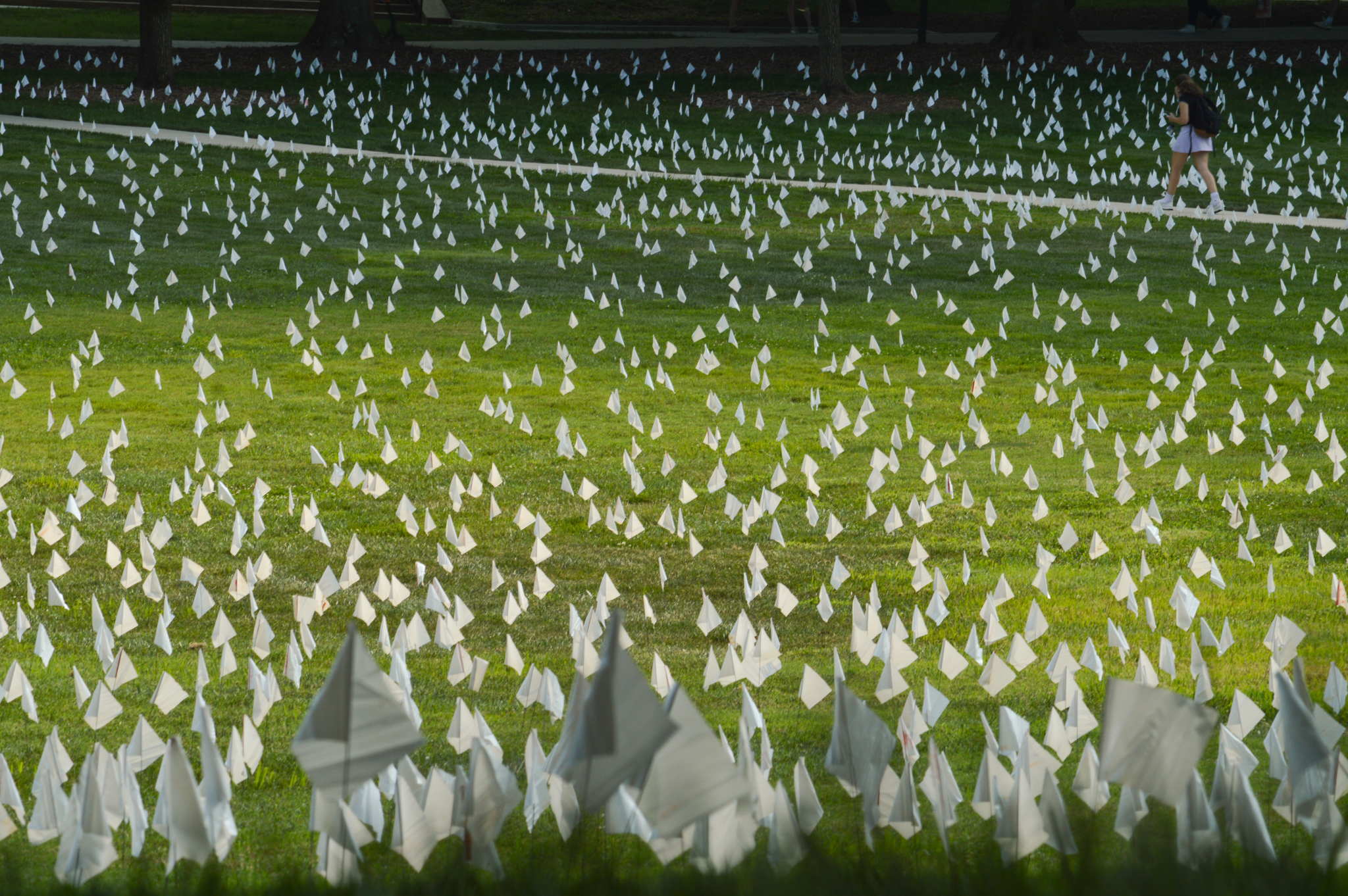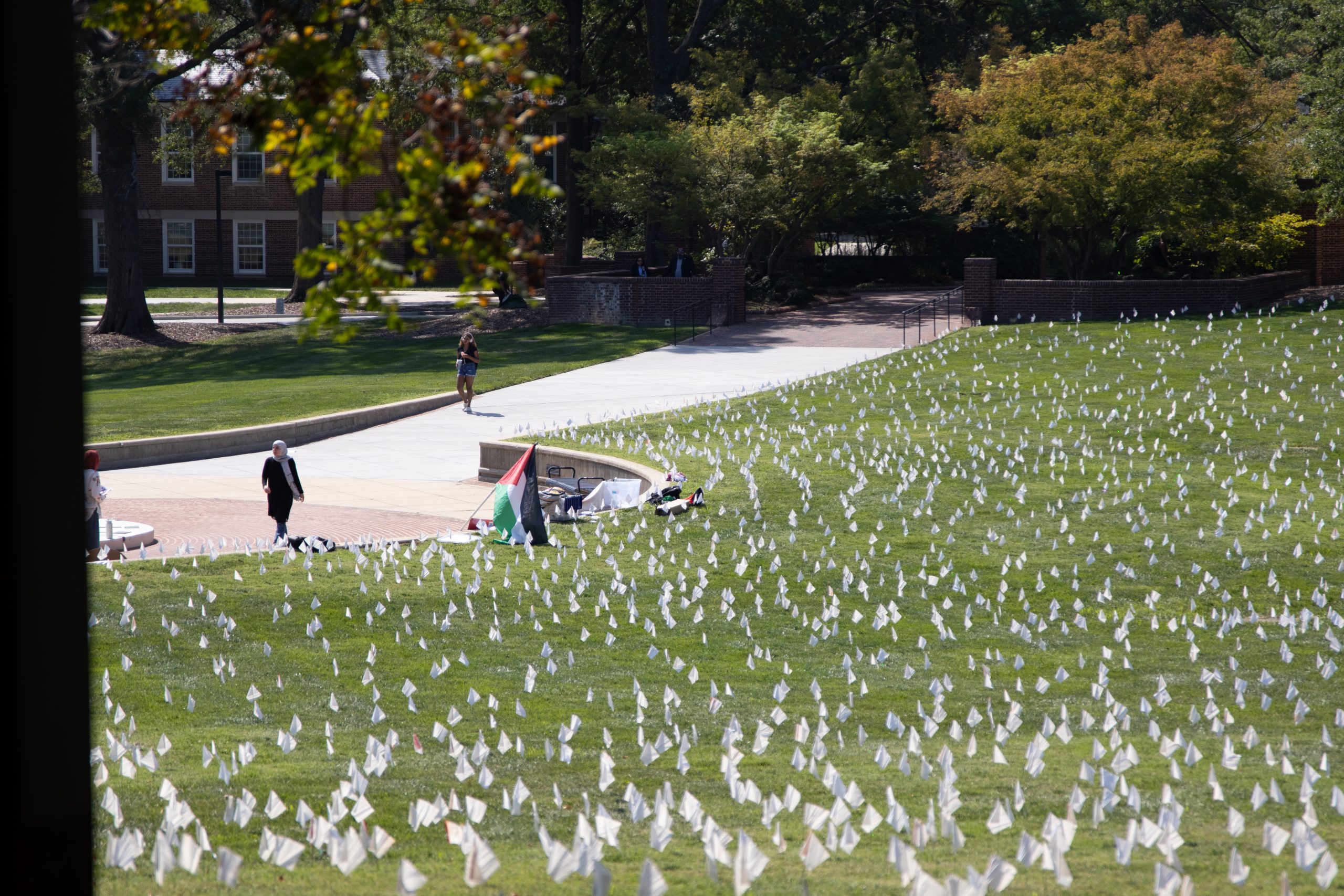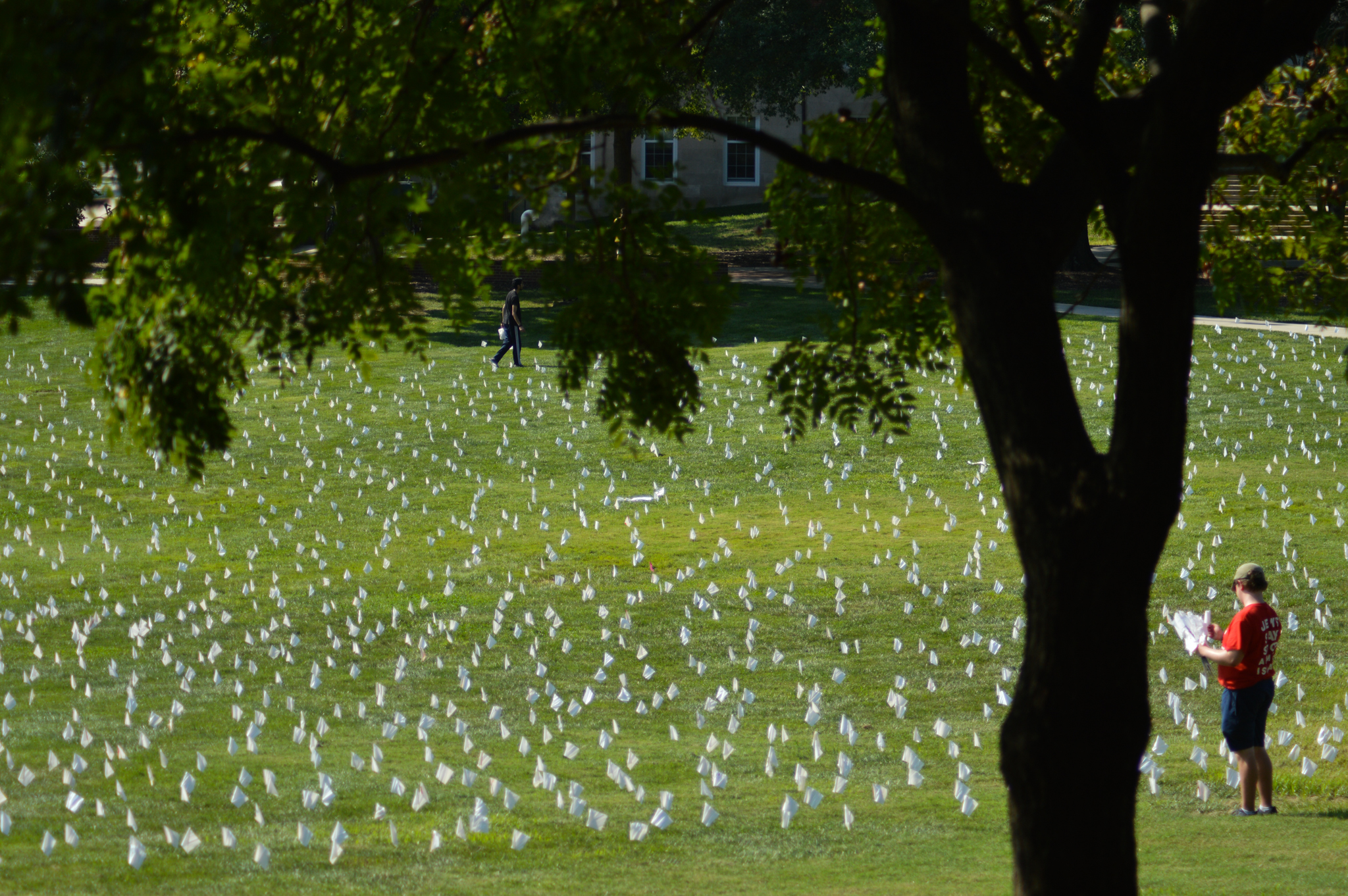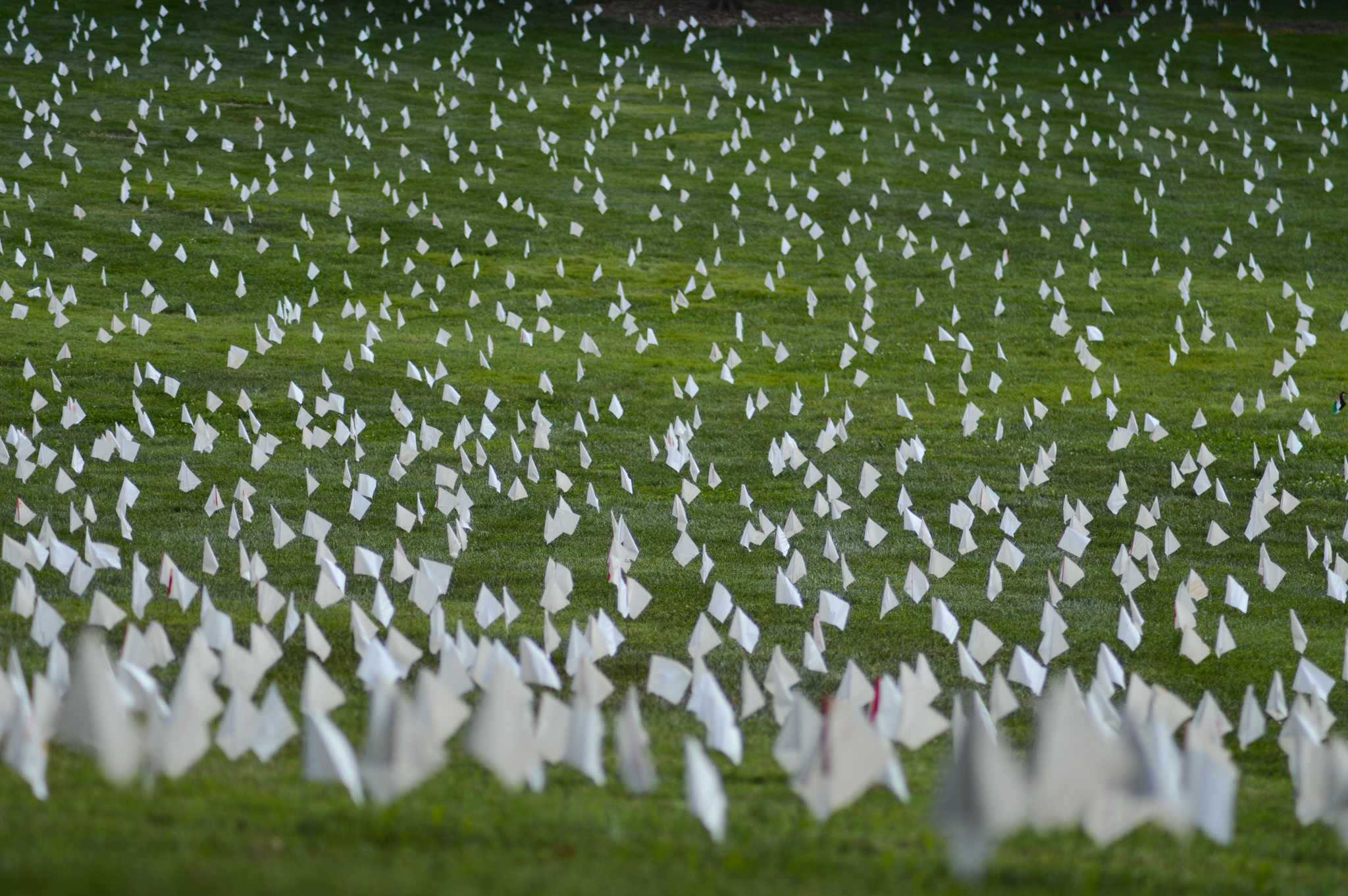CLARIFICATION: This story has been updated to better reflect that the letter published in The Lancet may not have been peer reviewed.
The University of Maryland’s Students for Justice in Palestine chapter planted about 15,000 white flags on McKeldin Mall Tuesday.
Each flag honored about 10 people killed and harmed by Israel’s violence in Gaza across the past 10 months, according to event organizers. In the afternoon, several attendees chanted in support of Palestine and delivered speeches to a crowd of several dozen community members on McKeldin Mall.
“These are individuals, just like you and I. They had dreams of their own, and they had their desires,” sophomore computer science major Zyad Khan, a Students for Justice in Palestine member, said during his speech. “We must understand that their conflict goes beyond mere conflict. It is a quest for liberation.”
Tuesday’s demonstration followed a similar event in January where Students for Justice in Palestine planted about 3,000 flags on McKeldin Mall.
Members of several other student organizations on campus, including this university’s chapters of Jewish Voice for Peace and the Coalition for Human Rights in the Philippines, also attended the event.
Students for Justice in Palestine members come from diverse backgrounds, Khan told The Diamondback.
Event organizers said they hoped this week’s event would educate university community members and raise awareness on campus about people who have been killed in Palestine.
[Two major defense contractors gave UMD more than $46 million from 2010 to 2023]
Israel’s military forces have killed more than 40,000 people in Gaza since Hamas’ Oct. 7 attack on Israel, The Associated Press reported Wednesday. Hamas killed at least 1,200 people in Israel and took about 250 hostages in the 2023 attack, according to The Associated Press.
Some Students for Justice in Palestine members referenced a letter published July in The Lancet — a peer-reviewed medical journal — that suggests the death toll in Gaza could be much higher when accounting for indirect deaths, such as reproductive, communicable and non-communicable diseases.
The letter was in the correspondence section of the journal where letters “are not normally externally peer reviewed,” according to The Lancet’s website.
“Applying a conservative estimate of four indirect deaths per one direct death … it is not implausible to estimate that up to 186,000 or even more deaths could be attributable to the current conflict in Gaza,” the letter read.
Abel Amene, a Students for Justice in Palestine member, said one of the goals of Tuesday’s demonstration was to visually depict the scale of “destruction and genocide” in Palestine.
Event attendees looked to educate other students through their display. Some handed out flyers to community members who walked by the flags.
“People are maybe curious and may not be familiar with what’s going on,” Amene, a senior physics and economics major, said.
Amene said he hopes community members who read the flyer choose to attend other educational events Students for Justice in Palestine plans this semester.
[UMD increases security at annual Israel Fest and boycott]
In a statement to The Diamondback Wednesday, this university said the demonstration organizers followed the university’s event and interim policies.
“As a public university, [this university] welcomes and expects expressive activity that is within the bounds of our policies and applicable state and federal laws,” the statement read.
Rifka Handelman, a Students for Justice in Palestine member and president of this university’s Jewish Voice for Peace chapter, said they attended the event to support Palestine and “mourn in a public way.”
The senior environmental science and policy major said they hoped the event reminded students returning from summer break that people on campus are still fighting for peace and a free Palestine.
“Even though this is no longer a new thing that’s in the news all the time, I hope people still care,” Handelman said. “I hope that they join the fight with us.”

